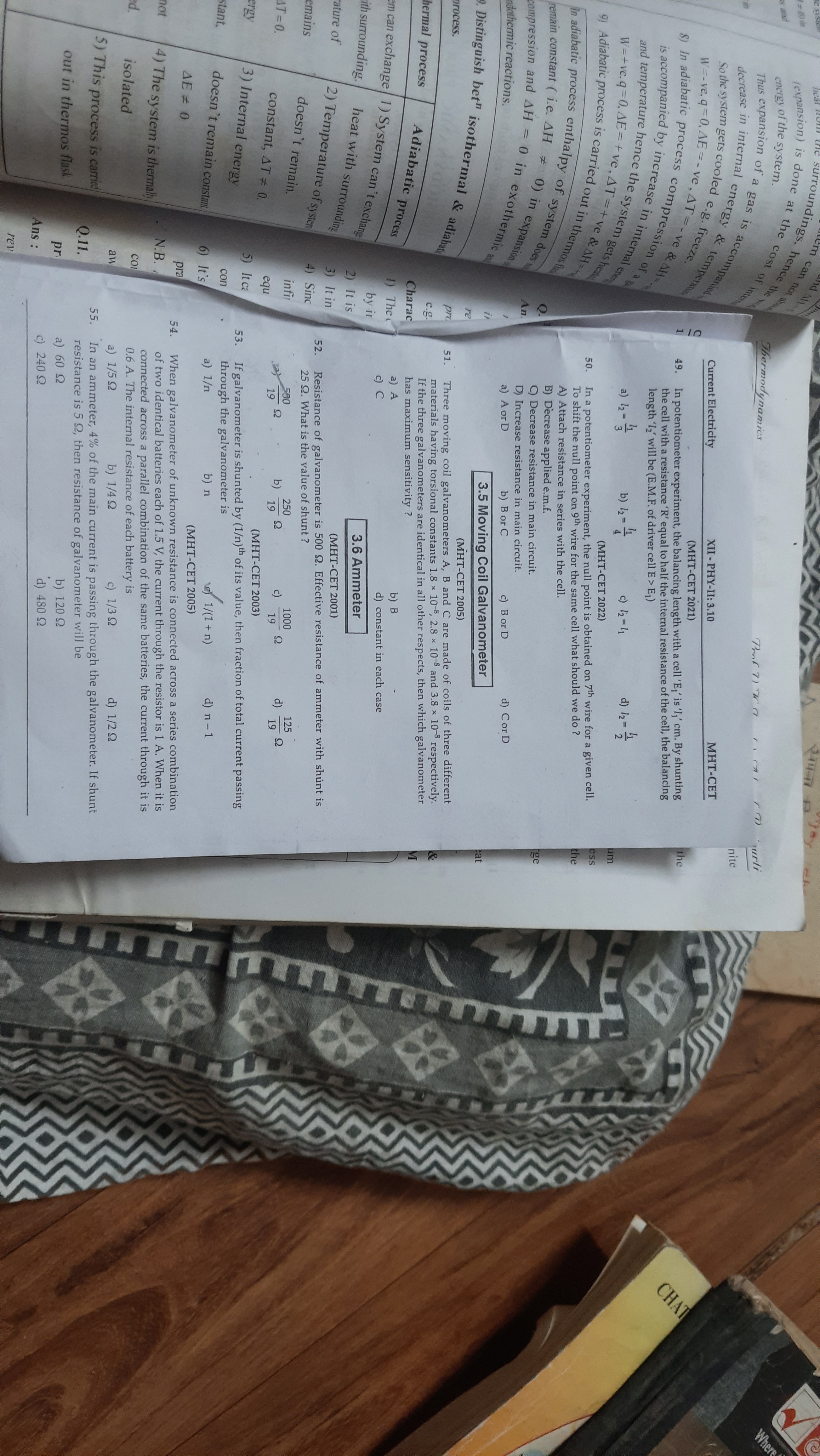Question
Question: In potentiometer experiment, the balancing length with a cell 'E₁' is 'l₁' cm. By shunting the cell ...
In potentiometer experiment, the balancing length with a cell 'E₁' is 'l₁' cm. By shunting the cell with a resistance 'R' equal to half the internal resistance of the cell, the balancing length 'l2' will be (E.M.F. of driver cell E > E₁)

A
l2=31l1
B
l2=41l1
C
l2=l1
D
l2=21l1
Answer
Option (a) l2=31l1.
The terminal voltage becomes
V=E1×R+rR=E1×r/2+rr/2=E1×31.Since the potentiometer wire is uniform, the balancing length is proportional to the potential difference. Thus,
l2=31l1.Explanation
Solution
When the cell is shunted by a resistance R=2r, its terminal voltage becomes
V=E1×R+rR=E1×r/2+rr/2=E1×31.Since the potentiometer wire is uniform, the balancing length is proportional to the potential difference. Thus,
l2=31l1.